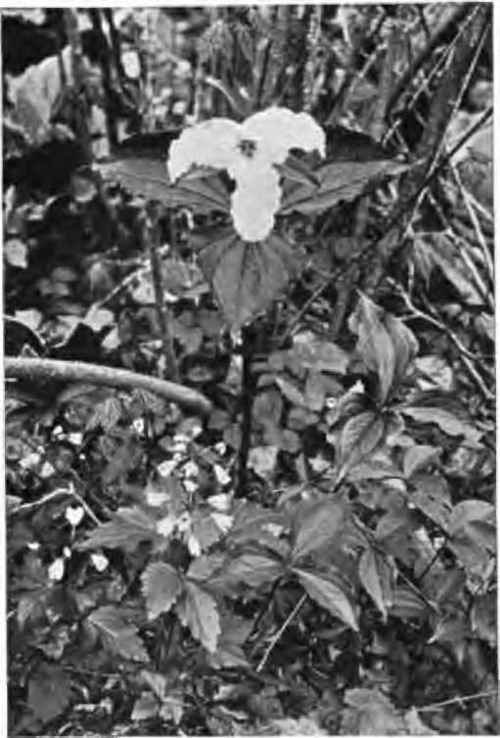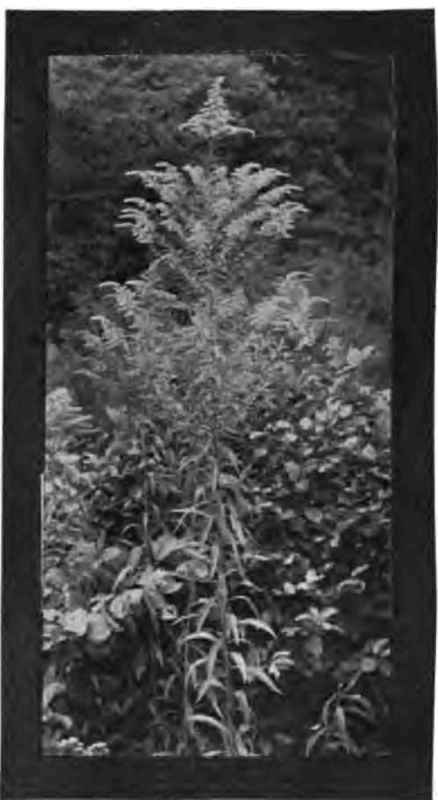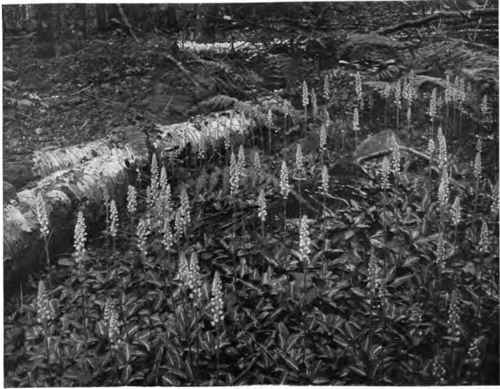Wild Gardening In A Small Area. Part 3
Description
This section is from the book "How To Make A Flower Garden", by Wilhelm Miller. Also available from Amazon: The Well-Tended Perennial Garden: Planting and Pruning Techniques.
Wild Gardening In A Small Area. Part 3
In the wet ground were planted the early spring cress, the painted cup, and a little later on the pitcher plant, the purple-fringed orchis, and a dozen or more specimens of the pogonia and the calopogon. Surrounding these were placed the taller and more vigorous of the water-loving plants. At one end I put several stalks of the tall meadow rue, and about them a few plants of the tawny touch-me-not. Back of these I massed the cardinal flower and the great lobelia. Along the edge and farther from the tank grew the hyssop skullcap, the purple vervain, and the yellow sundrops. At the other end a great quantity of the blue flag was set out, and a little way off a thrifty bunch of marsh marigold. During the year of transplanting all did well, for I was careful to keep everything wet. But I knew that the test would come in the fall, when the country house would be closed and the delicate plants would be left upon a dry hillside, with no other moisture than the natural rainfall until the following spring.

Trillium grandiflorum, with toothwort in the foreground.
As I might have expected, with the more tender flowers I failed. Such of the pitcher plants as survived the winter sent up a few lean and impoverished pitchers, but none of them had vitality enough to produce a flower. To my surprise, half a dozen pogonias and a few calopogons struggled to maturity amid the grass, and bloomed. Exquisite in colour and fragrance they were, but it was easy to see that in the adverse conditions in which they were placed they were not the "fittest" that were destined to survive. With "the flowers of more vigorous habits I succeeded better. The Joe Pye weed grew like the fabulous beanstalk. The blue flag was a mass of colour, and right in the midst of it a sturdy buttercup scattered its golden disks in all directions. This illustrates one of the happy accidents of wild gardening, for many a root is brought in unawares, to grow to maturity and surprise us some morning by flaunting its unexpected flowers in our face. The tall meadow-rue and the jewel-weed made a combination of considerable beauty. But the cardinal flower surpassed them all. Ordinarily, too few buds open at once, and consequently the one-sided racemes, in spite of their brilliance of colour, present a ragged and incomplete appearance.
But, owing to some magic of soil or sun, my flowers burgeoned out rich and full. Such magnificence of colour, such compactness of bloom, I have never seen. The flowers actually overlapped one another like scales, and the inflorescence was without a break. For whole weeks they stood there like tapers of vermilion flame; and day by day I watched them as, with the advancing bloom, the superb colour crept slowly up the stems, until at length the last glory flickered at the top and died. And all that was left were a number of unsightly stalks on which the seed-cases were already beginning to turn brown.

Commonest and best of the goldenrods (Solidtgo Canadensis)'.
Of course, I had many disappointments; but these are not so pleasant to dwell upon. Many a specimen transplanted with tender care never came up. Moles beneath the surface, and rabbits above, had to be reckoned with. Once a workman hired to clear out the weeds eradicated a thriving colony of the beautiful though ephemeral day-flower; and occasionally when I returned at night I found that during the day my junior assistant had dug up my most cherished possession.
Nevertheless, in spite of all drawbacks, the making of the wild garden has been a pleasure. Holidays, vacations, and many an hour snatched before and after the business of the day, have been devoted to its care. Woods and meadows and mountains have been explored, and the search after the hiding-places of the rarer flowers has had about it some of the keen enjoyment of the chase. In the three years that it has been a-building quite a deal lias been accomplished. From the time the first hepatica opens its eyes until the last gentian shrivels in the frost some eighty species bloom within its narrow boundaries. And most of these have been brought there, in basket or wheelbarrow, from the country round. The stocking of the garden has furnished an object for every ramble and been the dominant idea in every drive. It has involved manual labour of the most arduous kind, for I had no corps of servants to whom I could say go hither and they went, nor do this and it was done. The garden, such as it is, is the work of my own hands, and the enjoyment I find in it is heightened by the labour it cost. If the making of it has brought me into closer contact with nature, so has it also awakened a wider sympathy with man.
One cannot push a loaded wheelbarrow over many miles of unbroken country without getting rid of much of his indifference toward the men who work with their hands. As a recreation it has displaced tennis and the wheel, and even the links hold out their allurements in vain. Recreation, instruction, work: these three are found in my wild garden. What royal game can offer more?

A colony of the native orchid commonly called "rattlesnake plantain" (Goodyera pubescens).
Continue to:


